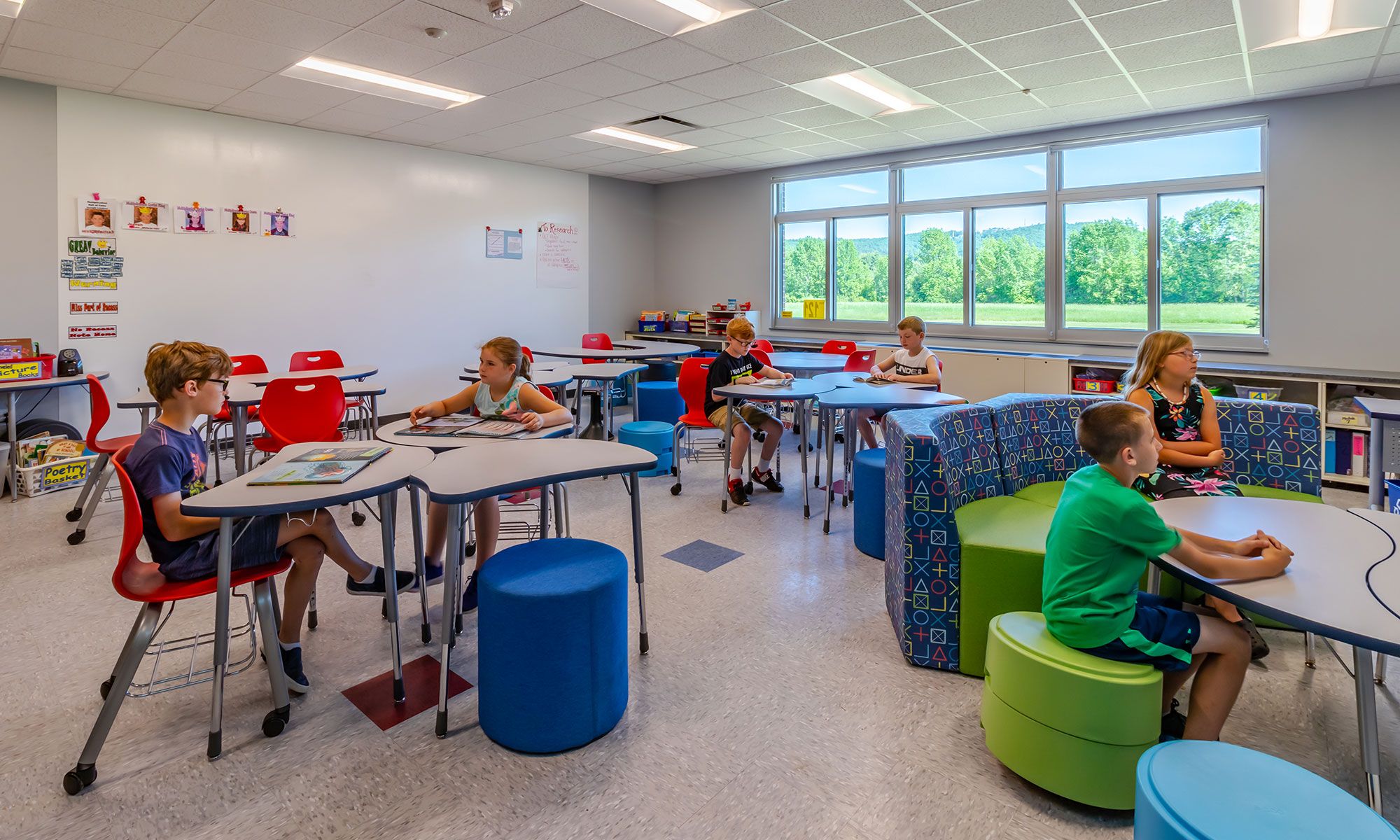Post-Coronavirus: Re-Imagining the Design of Educational Facilities
Dr. Douglas Huntley, a retired superintendent, and our design teams answer how COVID-19 might impact the design and renovation of educational facilities.
Post-Coronavirus:
Re-Imagining the Design of Educational Facilities
When New York State Governor Cuomo announced earlier this month that school facilities were to close through the end of the 2019-2020 academic year due to COVID-19, the return to normalcy became more unknown. Fortunately our remarkably resilient school system has largely continued despite buildings being closed since March 18.
Still, educational facilities fulfill a vital need and reopening efforts are well underway. Partnering with school leaders to support their reopening planning efforts, CSArch is exploring what this all means for the future of the built environment in a post-coronavirus world.
In collaboration with Dr. Douglas Huntley, a retired school superintendent, we asked our design teams how COVID-19 might impact the design and renovation of educational facilities now and in the future. Here’s what we’ve learned so far:

Dr. Douglas Huntley, Retired Superintendent at Queensbury UFSD
Q: Plans to reopen educational buildings will further emphasize the need for student health and safety. Officials are looking at strategies like alternate days of attendance, hybrid online scheduling models, and 12-month schooling to reduce the number of students in the building at any given time. In addition to these changes, what physical changes do you expect to see in school buildings?
A: Already trending, we should see a continued increase in the demand for automation, with schools considering touchless lighting and temperature controls, motion-activated doors, and voice-activated elevators. The use of hands-free dispensers for facemasks and synthetic gloves and touchless hand washing and sanitizing stations may become commonplace. And security vestibules could be equipped with fever-detecting features to measure body temperature.
Bathrooms will likely receive the greatest focus, with even more touch-free devices. The controversial topic of bathrooms without doors may gain more traction, with a code-permitting solution required that will balance the need for privacy and maximize student health.
From shared computers, desks, tables, doors, vending machines, and bathroom facilities, communal surfaces are widespread in school buildings, and all are potential sources of contagion. In addition to choosing easy-to-clean, non-porous materials, we can expect to see a greater use of materials with anti-microbial properties in building construction and in the selection of interior fabrics and finishes.
Full-time robotics can help, too. For example, robotic floor cleaners can operate around the clock constantly keeping floors clean and sanitary, allowing cleaners and custodians to focus on other high priority issues. Small storage areas with recharging capabilities will need to be considered in future school design or re-design.
The strategic design and installation of modern HVAC systems is another critical factor in the prevention of disease and germ spreading, as modern equipment can circulate and change air quickly, thus cleansing the air frequently and regularly. Used by many hospitals and healthcare facilities to minimize the transmission of airborne pathogens, the addition of UVC airstream disinfection is an engineering design solution schools may consider, though it could come at a high cost for equipment, operation, and maintenance. If properly sized and installed, UVC airstream disinfection can inactivate microorganisms like bacteria, fungi, and viruses.
Research has also suggested a link between indoor relative humidity (ranging 40%-60%) and reduced contagion. While humidity levels must be taken into consideration with the impact of condensation on building materials, this link could have implications on the future design of building envelopes.
Q: Schools are the epicenters of learning and activity in our communities. How can the design and renovation of schools help minimize the digital divide to ensure digital connectivity and equity?
A: For districts with widespread connectivity and 1-1 technology already embedded in daily learning, education continues. Unfortunately, for districts without universally available digital access, the continuation of teaching and learning takes a different route. Here the digital divide is clearly evident and only increases as time goes on, creating serious inequities in education.
When we think about the future of school design, perhaps the highest priority is a strongly embedded technology platform for teaching, learning, safety, and business functions. Implemented in tandem with a robust technology plan and as an essential element of a capital improvement project, a school’s network in a post-coronavirus world will require stronger, more efficient, and more stable infrastructure to meet the needs of students and the community.
Q: How can school buildings be improved to support social distancing?
A: The need for social distancing has us rethinking the way common areas in public schools are designed. With the continued goal to allow students and community members to assemble, school design may refocus to encourage spreading out, with greater separation in places like gymnasiums, cafeterias, auditoriums, corridors, and classrooms. In the immediate future, classrooms will benefit from flexible furniture to configure desks further apart and facing the same direction, thereby reducing the typical class size and the transmission of germs.
Social distancing will naturally encourage small group breakouts, an upward trend we’ve been seeing in schools for several years. This has lead to the design of alternative learning environments such as smaller breakout rooms and extended learning areas for students. Providing enrichment opportunities, these spaces are based outside of the traditional classroom and promote small groups and personalized instruction.

The incorporation of multiple furniture styles, a trend common in 21st century classroom design, allows teachers to design their classrooms into small group clusters and encourages social distancing.
Q: How can school buildings of the future be designed with pandemic preparedness in mind?
A: Like the response to the Ice Storm of 1998, Hurricane Katrina, and 9/11, our public school system has once again proven its resilience in the wake of COVID-19. Each of these catastrophes caused the need for our schools to respond and adapt into newer models, increasing and expanding their roles and assuming greater responsibilities.
As schools engage in building projects in the future, they may wish to design their facilities to be more adaptable. For instance, certain school buildings like a field house or gymnasium could be designed to be easily converted into temporary space for emergency shelters or hospitals. High schools are “good conversion options because they are found in almost all communities, are big enough to house 200-500 patients, have wide corridors, have mostly nonporous durable surfaces, and are designed for adults,” according to a Building Design + Construction Magazine article on how to turn a high school into a patient care center.
Though the design of hospitals is inherently different than schools, the ability to convert space to accommodate hospital overflow patients could become a new community function of schools in the future.
Years from now when we look back on the impact of COVID-19 on schools, we predict these physical modifications to the built environment will pale in comparison to the major changes in education that could be seen in the coming months and years. What we don’t expect to change is the way schools and their learning environments provide a sense of stability, connectedness, spirit lifting, and daily focus. For that reason, we expect the reopening of school facilities to be a day of cautious celebration.